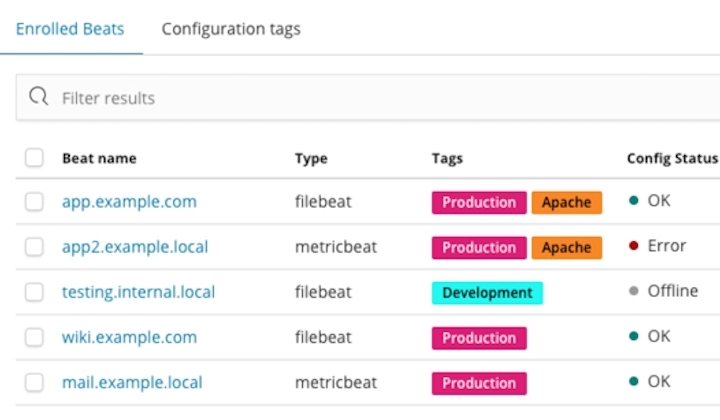


You may need to change this if you've installed this on a different server. network.host: By default, it is only accessible via localhost.If you don't want to lose this data, you need to change the location. You may want to change this to your desired location. node.name: To set a descriptive name of the node in case you're having multiple nodes.cluster.name: To set a descriptive name of the cluster.But you might need to change these configs for production. The elasticsearch.yml file inside that directory is quite descriptive and by default, you don't need to change anything for a simple setup. You can check where they are located for your respective systems. In Ubuntu, the config files are stored in the /etc/elasticsearch directory. } Let's understand the basic configurations: "minimum_index_compatibility_version" : "6.0.0-beta1" "minimum_wire_compatibility_version" : "6.8.0", "cluster_uuid" : "JPaSI3t1SK-qDXhkSapNmg", Elasticsearch Downloads pageĪfter successfully installing Elasticsearch, run this command to see if it is up: curl localhost:9200
ELASTIC FILEBEATS INSTALL
(For Elastic Cloud, you don't have to install Elasticsearch and Kibana).

ELASTIC FILEBEATS ZIP
There are instructions to install them using Zip files Package Managers like apt, homebrew, yum, etc or Docker. Go to the downloads page and install Elasticsearch, Kibana, Logstash, and Filebeat (Beats section) in the same order. You can use the Logstash pipelines in the Elastic Cloud though.
ELASTIC FILEBEATS HOW TO
How to install?Įven if you're using Elastic Cloud, you have to install Filebeat and Logstash on your own. If it is still unclear or you want to learn more about this, you can read this. In other words, I use Filebeat to read the logs from the file (even though Logstash can also do it) and Logstash to add, remove or modify data in the logs. And of course, Filebeat is quite lightweight. I've seen some logs getting lost in the past while using Logstash alone. The biggest advantage of having Filebeat is that, even if the Logstash server is down, it keeps on retrying. We can manage all the pipelines to process logs centrally on a single server.But I generally prefer it to be on a different server because: Logstash can be on the same or different servers. This Filebeat is sending logs to the Logstash server that is being used to process/transform the logs and sends them to Elasticsearch. You can see that we are using Filebeat (or any other Beats) on the main server where our application is adding logs to the log file(s). Let's understand this using the architecture: Image Source: logz.io But after using both of them alone and together in several projects I got to know the differences and I started using both of them together only. It felt like they both are doing the same things: They both can read from a file, convert JSON string logs to JSON, add extra fields if needed, etc. When I was setting this up for the first time, I was very confused between these two. Why do we need both Filebeat and Logstash? Setting up Logstash (For both self-hosted and Elastic Cloud).Why do we need both Filebeat and Logstash?.Then We'll see how we can connect all the things in both self-hosted Elasticsearch and Elastic Cloud. Because there was very little discussion about that in the community forums like StackOverflow or their own forums.įirst, we'll be discussing why and where do we need Filebeat and Logstash. But when I tried to connect the same thing with Elastic Cloud, I faced too many problems. There are a lot of blogs and video tutorials on how to set up Filebeat and Logstash with self-hosted Elasticsearch.


 0 kommentar(er)
0 kommentar(er)
